
Diagram showing stem structure Royalty Free Vector Image

Morphology of the Stem. Stem morphology is simple. Its components are nodes (places where leaves are/were attached) and internodes, long or short (in the last case, plant sometimes appears to be stemless, rosette-like).Stems are different by the type of phyllotaxis.The phyllotaxis refers to the arrangement of leaves. If there is one leaf per node, it is a spiral (alternate) arrangement.
What are the parts of a stem? lovethatleaf

Stems are characterized by the presence of nodes (the points of attachment for leaves or branches) and internodes (regions between nodes). Plant organs are made up of simple and complex tissues. The stem has three tissue systems: dermal, vascular, and ground tissue. Dermal tissue is the outer covering of the plant.
Plant Cells. Overview of Plant Structure online presentation

Figure 30.3.1 30.3. 1: Sclerenchyma cells in plants: The central pith and outer cortex of the (a) flax stem are made up of parenchyma cells. Inside the cortex is a layer of sclerenchyma cells, which make up the fibers in flax rope and clothing. Humans have grown and harvested flax for thousands of years.
Root, Stem and Leaf Class 6, Getting to know Plants, Science

The stem of plants is an organ that helps support other plant parts, transport nutrients, store food, and sometimes even reproduce! Content verified by subject matter experts Free Vaia App with over 20 million students Explore our app and discover over 50 million learning materials for free. Sign-up for free! Biology Plant Biology Plant Stem
Parts of a Stem With Their Structures and Functions
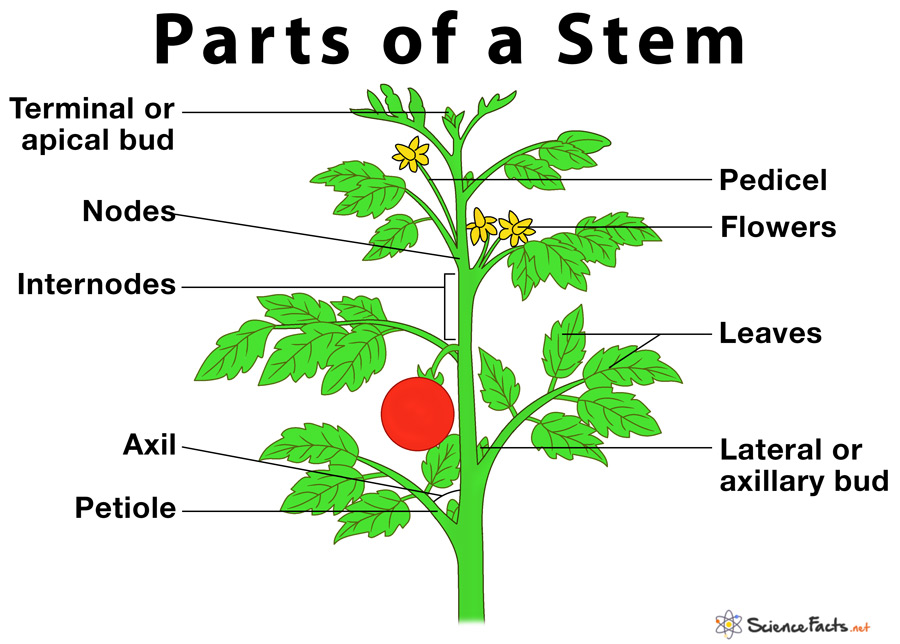
The first cork cambium produced by a stem arises from the cortex, but subsequent cork cambia are produced by the parenchyma cells of the secondary phloem. (In contrast, the cork cambium arises from the pericycle in roots.) Figure 3.3.3.4 3.3.3. 4: Cross section of a basswood ( Tilia) stem magnified at 400X.
[DIAGRAM] Prayer Plant Stem Diagram

Stem - A plant's stems help support the weight of the plant and all its leaves. Water and minerals are brought up from the roots. Nutrients made by photosynthesis in the leaves are sent down and all around the plant. Roots - A plant's roots anchor it into the ground. They also collect water and minerals from the soil and transport them up.
Section 5 Roots, Stems, and Leaves Nitty Gritty Science
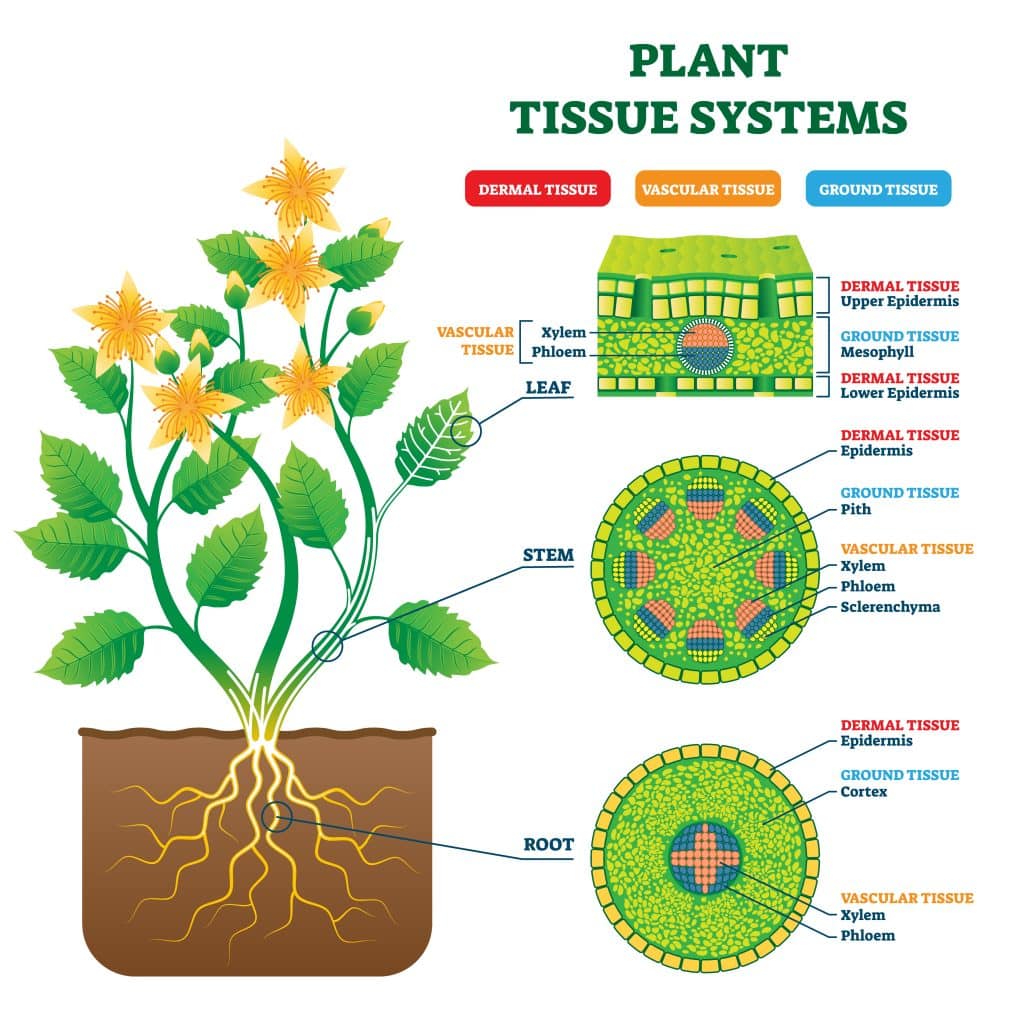
Specialized terms Stems are often specialized for storage, asexual reproduction, protection, or photosynthesis, including the following: Climbing stem of Senecio angulatus. Acaulescent: Used to describe stems in plants that appear to be stemless.
Collection of Stem Of A Plant PNG. PlusPNG
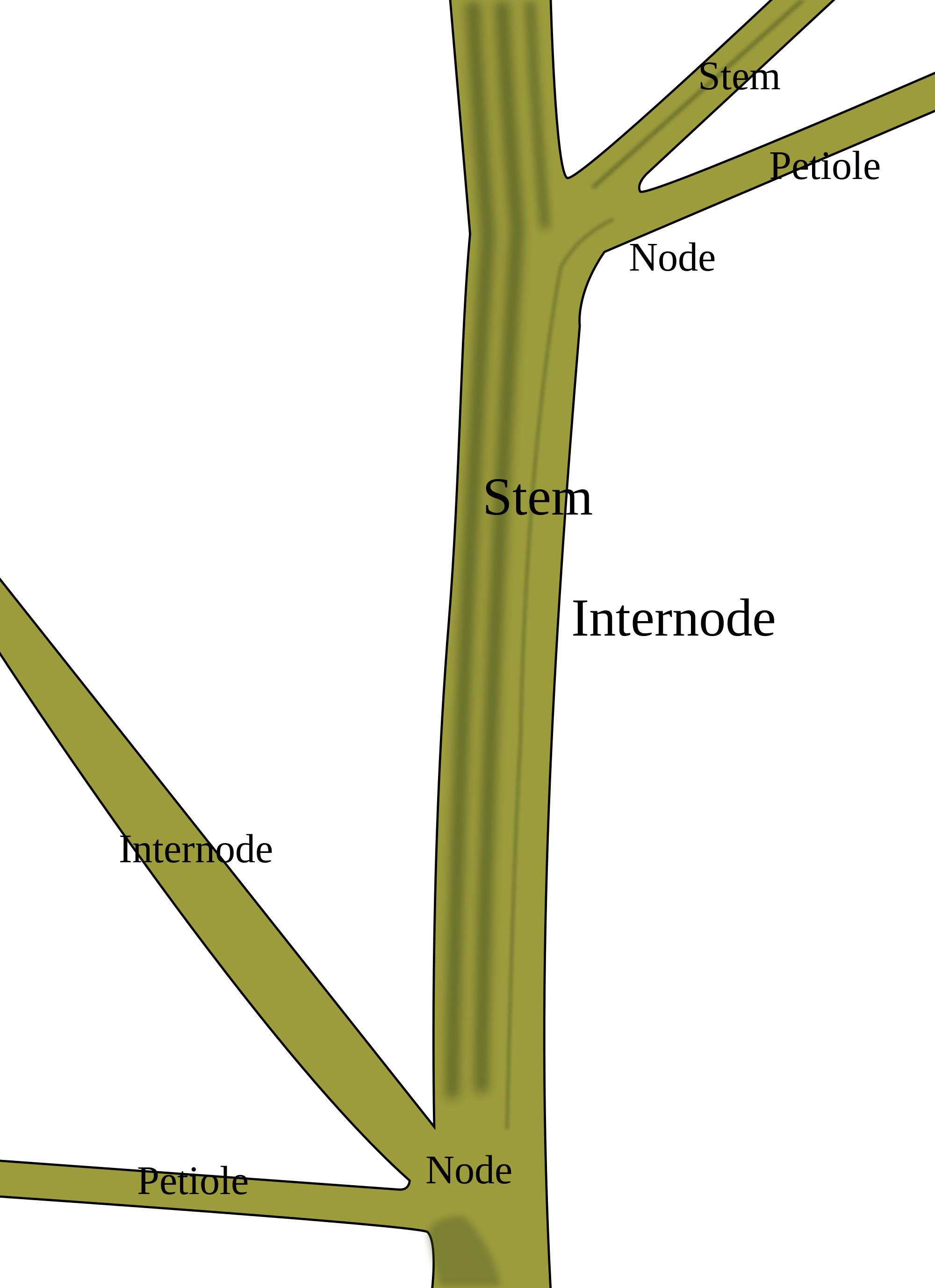
A plant stem is one of the two main structural axes of a vascular plant. It is the part of the plant that lies above the ground. Few stems are also found underground and are considered to be stem modifications. Functions of Stem It supports and holds leaves, flowers, and fruits.
Parts of a plant Rabbitsabc

stem leaves Watch: The structure of plants Learn about the roots, stem, leaves and petals. Video Transcript Plants sometimes also have: trunks branches flowers or blossom fruits such as.
Plant_Bodies_stems

Introduction to stems Notice this image of a palm tree because it will come up again later. Think about where and how it is growing. Travel Aficionado - CC BY-NC 2.0. Herbaceous plants are plants whose above-ground plant parts die back to the soil surface at the end of the growing season. Herbaceous plant shoots grow in length and diameter in the same way that roots do: the apical meristem.
Premium Vector Diagram showing stem structure of a plant
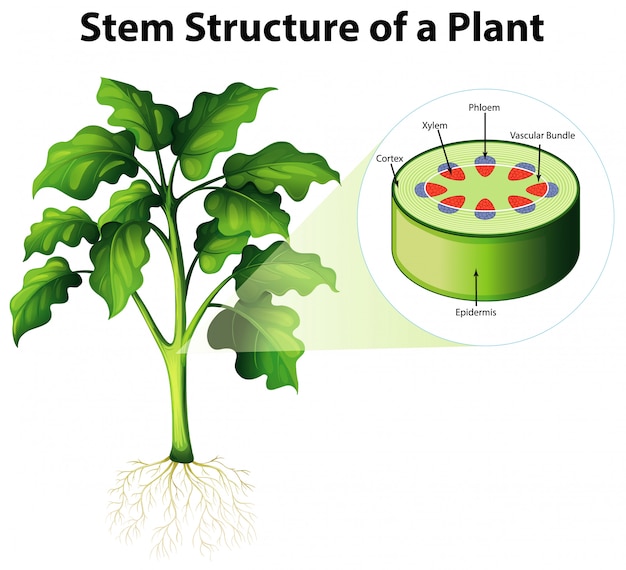
Stems. The stem is the structure which forms the core of the shoot system. The stem is divided into two parts. These are the nodes and internodes . Nodes are where bud s grow into leaves, stems, or flowers. I nternodes are the parts of the stem in between the nodes. In most plants, stems are found above the ground.
Plant_Bodies_stems

Broadly, plants have two organ systems: A) the root system and B) the shoot system. A typical diagram of a plant body consists of three parts: 1) roots, 2) stems, and 3) leaves, each having specialized functions.Apart from these basic parts, a flowering plant also contains 4) flowers and 5) fruits.. The root system covers the underground parts of a plant, which include the roots, tubers, and.
Diagram showing internal plant stem structure 1154883 Vector Art at Vecteezy
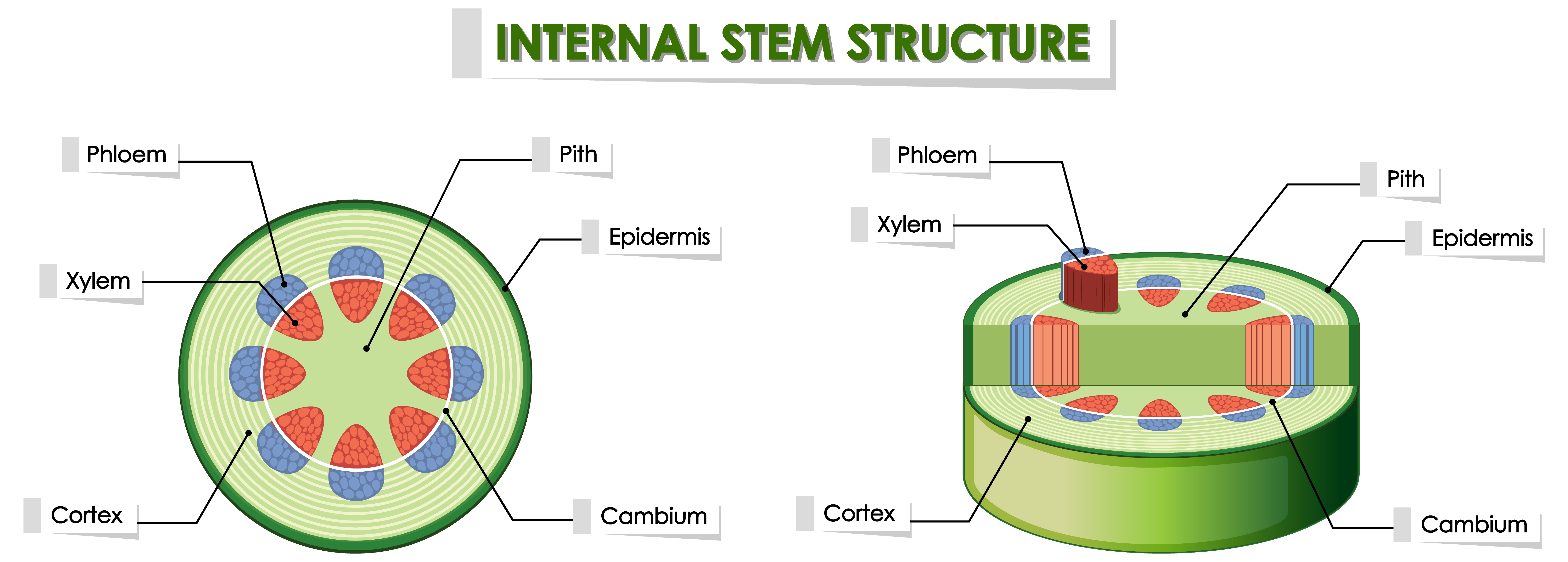
Image by RolfDieterMueller ( CC-BY) Figure 3.3.2.3 3.3.2. 3: In eusteles (left), vascular bundles are arranged around the periphery of the ground tissue. The xylem tissue is located toward the interior of the vascular bundle, and phloem is located toward the exterior. Primary phloem fibers cap the vascular bundles.
Internal Structure of Root HubPages

Stems. Organization of Tissues into Tissue Systems. The tissues of the stem, as with the other organs, are organized into three tissue systems: dermal, vascular, and ground tissue systems.Below you can see how the tissue systems are arranged in the stem. Diagram of a young plant, Illustrating the cross section of the stem. Primary Growth in Stems.
Plant Structure Mrs. Irwin's integrating science in garden restoration
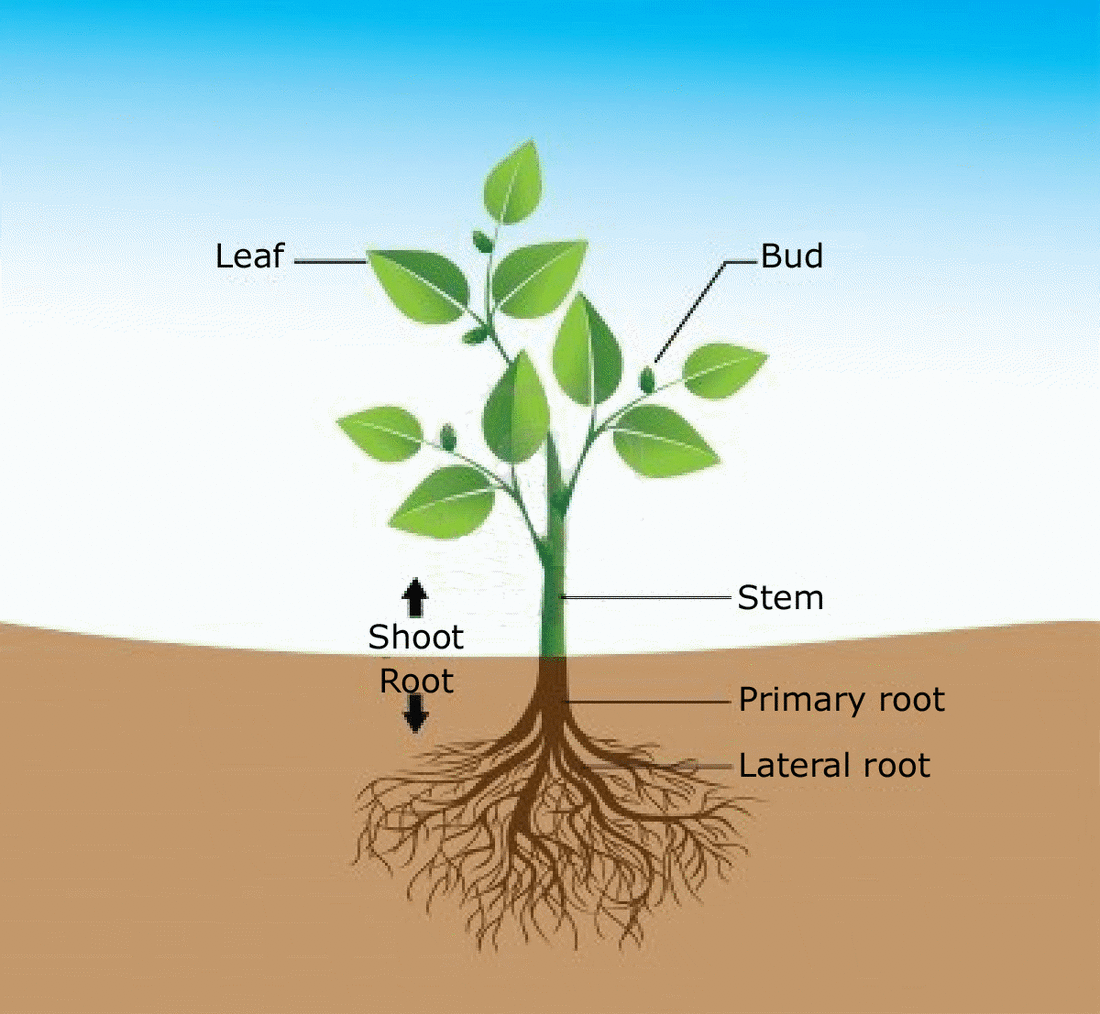
The function of the stem is to support the plant and transport nutrients to the leaves and flowers. Of course, flowers and plants have many other parts, each with its own specific function. In this guide to the parts of flower and plant, you will learn what makes them so amazing.
The Plant Body Structure at Swampscott High School StudyBlue

The epidermis is a single layer of cells covering a plant's leaves, flowers, roots, and stems, forming a boundary to the external environment. Just within the stem's epidermis, there is a layer of spongy cells that make up the cortex. The majority of the cortex is made up of parenchyma tissue, one of the three simple tissues found in plants.